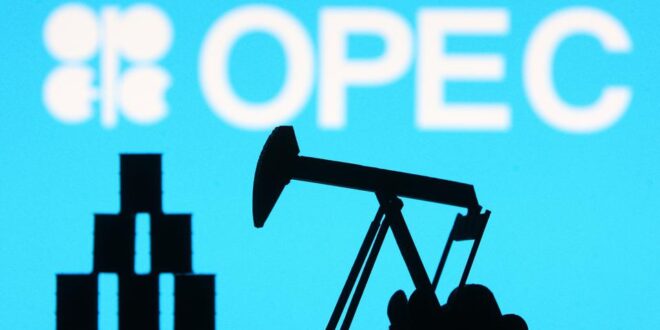After a decade of exponential growth, the U.S. shale patch is no longer the swing producer on the global markets. That role is now back in the hands of OPEC and its largest and most influential members in the Middle East, analysts and industry executives say.
From growth of over 1 million barrels per day (bpd) in oil production annually before the pandemic hit demand in 2020, the United States is now set to see the growth rate at half of that, at best, this year. Although most of the growth comes and will come from the shale patch, the pace of output increases has slowed, and some analysts have recently called the peak of shale production coming as early as 2024.
A number of factors have combined in recent months to weigh on U.S. shale production growth – from capital discipline to labor shortages, from a lack of external capital to cost inflation and high interest rates, from exhausting prime locations to drill to steeper drops in well productivity over time.
U.S. Shale Growth Underwhelming
U.S. shale will still grow, even at lower rates, analysts say. But the Permian will no longer be the global swing producer it used to be before 2020 when U.S. producers plowed all their cash and took on more debt to “drill, baby, drill” every time oil prices moved higher.
Last year, not even $100 oil tempted American producers. Supply chain bottlenecks, cost inflation, labor shortages, maturing asset base, and lower availability of capital have been the biggest drags on U.S. shale production over the past year, executives at E&P firms said in the Dallas Fed Energy Survey for Q4 last month.
A total of 32% of E&P executives selected “cost inflation and/or supply-chain bottlenecks” as being the biggest drag on their firm’s production, 27% chose “maturing asset base,” and 16% indicated “availability of capital.” Other options each received 9% or less.
“Geopolitical risk, economic uncertainty, material and/or labor shortages and an administration that is hostile to the industry have made it difficult to project what the next 12 to 18 months will be like for the upstream sector,” one executive at an E&P firm said in comments to the survey.
According to the EIA’s latest Short-Term Energy Outlook (STEO), U.S. crude oil production is expected to have averaged 11.7 million bpd in 2022 and will average 12.4 million bpd in 2023, which would surpass the record high set in 2019.
This may be too optimistic, some analysts and industry officials say.
U.S. oil supply growth will be modest this year, at around 400,000 bpd exit-to-exit at the end of 2023, according to Enverus Intelligence Research (EIR).
Enverus expects global demand growth at 1 million bpd this year, half driven by the Chinese reopening.
“Conversely, the combination of modest U.S. supply growth (0.4 MMbbl/d E/E), OPEC intervention and Russian sanctions prevents critical OECD crude, product and SPR inventory builds, leaving the market undersupplied if an anticipated pickup in the global economy materializes in the second half of 2023,” Enverus said in a report earlier this month.
Analysts at Energy Aspects warned in October 2022 that U.S. crude oil output from shale basins could peak in 2024.
“The aggressive growth era of US shale is over,” Scott Sheffield, CEO at the largest pure-play shale producer, Pioneer Natural Resources, has recently told the Financial Times.
“The shale model definitely is no longer a swing producer,” Sheffield noted.
At the Goldman Sachs Global Energy and Clean Technology Conference earlier this month, Sheffield said that Pioneer had lowered its estimates for total Permian oil production from all operators to about 7 million bpd by 2030 from around 8 million bpd forecast about a year ago. The EIA estimates that the Permian currently pumps 5.5 million bpd.
Many companies are running out of inventory and are moving to tier two and tier three inventory, Sheffield added.
Shale growth will probably be around 400,000 bpd this year, down from 500,000 bpd-600,000 bpd Sheffield had predicted for the last 12 to 18 months.
“And that will continue to decline over the next five years,” Pioneer’s CEO said.
OPEC Back In Driver’s Seat
OPEC is now in the driver’s seat, and if oil stays around $75, the cartel will likely act to support prices, according to Sheffield.
“They need oil to be at $100 a barrel or higher in my opinion. OPEC ministers are frustrated over the recent price fall. It’s understood. I think is going to change. If it stays too low, it wouldn’t surprise me if they have another cut. But they’ve got to wait till February 5 to watch the product ban on Russia,” he said at the Goldman Sachs conference.
For Jeff Currie, global head of commodities at Goldman Sachs, the U.S. shale patch was the place to look for spare capacity before 2020, and it was capable of influencing oil prices when American oil production surged in the decade to 2020.
“Today that flexibility is gone, pushing us back to the ‘old oil order’ of Opec dominance,” Currie told FT.

 Iran Energy News Oil, Gas, Petrochemical and Energy Field Specialized Channel
Iran Energy News Oil, Gas, Petrochemical and Energy Field Specialized Channel



